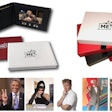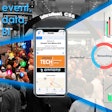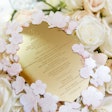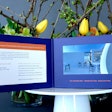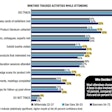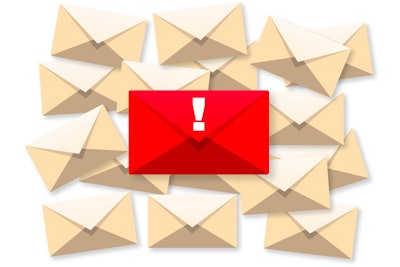
A guest received an invite to an event. Now what? Following up with confirmation and reminder emails can be a tricky balancing act for event planners—between wanting to keep guests informed and overloading their inboxes. To help stay out of the trash folder, experts offer their advice for creating must-read event correspondence.
1. What to Say
“The email [your guest] receives just after signing up is your first chance to talk to [them]. So this is when you begin to roll out the red carpet,” says Andy Crestodina, principal and strategic director of Chicago-based Orbit Media, a Web design company. “Use a warm, friendly tone. Talk to them like they are a person. Go beyond ‘thank you’ and make them feel welcome.”
Leif Nordberg, marketing strategist at digital agency Echo & Company in Boston, agrees. “First and foremost, include a thank-you. It doesn’t, and needn’t, be long, but you’re cultivating a relationship with every communication, so be grateful and appreciative.”
In terms of content, Tracy Kosolcharoen, a marketing manager at Eventbrite, suggests including the venue location and directions, as well as parking and public transport information, ticket information (such as, do guests need to print and bring their tickets?), the organizer’s phone number or email for inquires, refund policy, and a link to the F.A.Q. if applicable.
“Successive follow-up emails should build on each other and include pictures and video from the previous year’s event, quotes from attendees, and developing news such as new sponsors, speakers, and entertainment,” she adds.
Crestodina also recommends plugging any V.I.P. packages in the confirmation message, since guests are more likely to take action when prompted through email as opposed to on their own.
Pre-event emails should provide this type of relevant, pertinent information, so guests feel knowledgeable but not overwhelmed. “Generally, the more informed and prepared everyone is for your event ahead of time, the smoother the experience will be and the less questions that will pop up in the days leading up to your event. Your [guests] will appreciate not having to follow up with you excessively as well,” says Adam Hausman, co-creator of Chicago-based RSVPify, a free online service for creating customized R.S.V.P. forms.
[PULLQUOTE]
2. When to Send
There are no hard-and-fast rules when it comes to timeline and frequency of emails, but there are some basic guidelines. “Generally speaking, each follow-up email should have a specific purpose, such as a receipt and thank-you or a reminder,” Nordberg says. “Depending on how far into the future your event may be, you may need multiple reminders, but if you get up to four follow-ups for one event, it’s time to make sure each of those emails is still delivering on the purpose you outlined before.”
Kosolcharoen also cautions against being repetitive and says to “avoid emailing more than once a week.” But be sure to send one at least 48 hours before the event, which Eventbrite’s system does automatically, as a last-minute reminder, she adds.
In addition, Nordberg suggests sending an optional heads up for events with a long lead time. “If there are more than about 20 days between the purchase or R.S.V.P. and your event, you may consider a reminder email about a week before the event (in addition to the day-of reminder). This is particularly useful for business and corporate audiences that rely heavily on email communication for scheduling.”
Also consider sending a separate calendar invite (via Outlook or Google Calendar, for example), Hausman suggests, so guests have a handy way to access event information on their mobile devices as the event nears.
To reach those invitees who haven’t R.S.V.P.’d, Hausman recommends sending “a blanket reminder two weeks or so before you need to finalize numbers. If this doesn’t get you a response or the information you need, consider sending a personal email to clients you still haven’t heard from.” Or, if a set guest list isn’t required, “we’d recommend sending a few general reminders as the deadline looms, but keep it to two or three. More reminders might become an annoyance, and have a negative impact on your client’s experience and their desire to attend your event,” he warns.
3. How to Give Thanks
After the event, hosts can maintain those fruitful email relationships by following some simple manners à la Emily Post. “We think thank-you emails are absolutely necessary. That being said, the sole purpose of an email should not be contained to just those two words. Every time you reach out to someone, you have an opportunity to deepen your connection with him or her,” Nordberg explains.
In order to make the thank-you email more than just an easily discarded afterthought, customize the note based on guest information and actions. “Leverage data gathered during the registration process, as well as at the event, to craft a message that is relevant to the recipient,” Kosolcharoen says. “For example, what sessions, speakers, or topics did attendees follow or discuss? Consider sending them a personalized roundup of all of their favorite content pieces to easily access and share with their colleagues or friends, so that they can demonstrate the value of attending your event. Or you can share other new or relevant content you think they might like based on their previous interests.”
Nordberg adds that the email should include at least three key points: “Draw a connection between their actions and a positive outcome from your organization (e.g. ‘we were able to feed 100 people with your generous donation’); include any receipt or transaction information for their records; and include any follow-up asks, such as sharing a message on social media or signing up for your email list.”
The gesture can produce big results. “It’s a personal touch that can help evolve the relationship with your client and give them an avenue to keep in touch,” says Hausman.


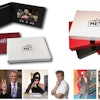


![Los Angeles-based Sterling Engagements hosted its 10th anniversary party on September 12, inviting former, current, and prospective clients to the private residence of client, and Lakers player, Jordan Farmar. 'We tried to keep it intimate while still incorporating all those [clients] that were near and dear to us along our journey of the first 10 years,' said Alexandra Rembrac, the company's principal and creative director.](https://img.bizbash.com/files/base/bizbash/bzb/image/2015/10/sterling_6.png?auto=format%2Ccompress&fit=crop&h=167&q=70&w=250)




